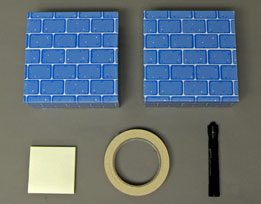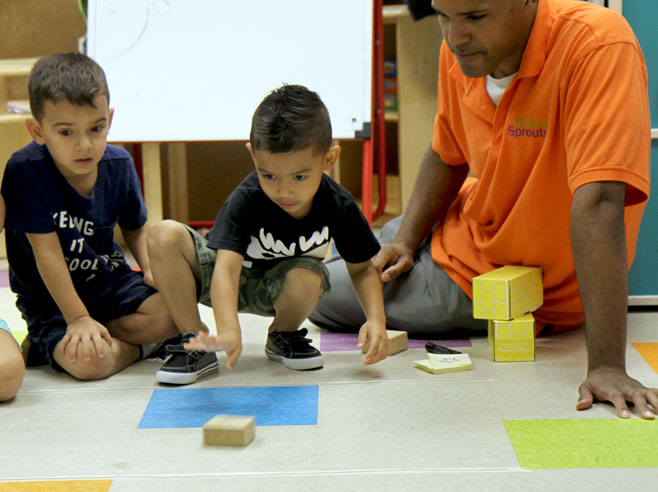Children explore how far a block will slide when given a little push or a big push.
Materials

- Masking tape
- Pair of identical cardboard blocks
- Sticky notes (1 per child)
- Optional: 2 large sheets of poster board
Preparation
- Draw a big star on several sticky notes. These will provide goals like the stars in the Coconut Star digital game.
- Identify an area of bare floor with at least 8 feet of distance in which to do the activity. If you do not have bare floor, tape large pieces of poster board to the floor to cover about 8 feet.
- Place three parallel lengths of masking tape on the floor: a start line, a line 2 feet away, and a line an additional 6 feet away.
Directions: Lesson 1
Guided Small Group
- Children explore the distance a block moves after giving it a big push or a little push. Place two identical cardboard blocks on the masking tape start line on the floor. Ask the group to observe as a child gives one block a little push. How far does it go?
- Invite children to predict what will happen if the second block is given a big push. Will it go farther than the first block or not as far? Ask children to explain their reasoning. Invite them to pay close attention to one another and share their thinking. Possible discussion ideas:
- We observed that the little push did not make the block move very far. What do you think will happen if we give the block a big push?
- Who thinks the block will move farther with a big push? Does anyone have a different idea?
- Encourage children to listen to others and restate ideas.
- Have children place sticky notes on the floor to mark where they predict the second block will stop. Why do they think the second block will go that far? Have a child give the second block a big push and note where it stops. How does it compare with the children’s predictions?
- Repeat the experiment in reverse order. Have a child give the first block a big push. What do children predict will happen if the second block is given a little push? Will it go farther than the first block or not as far?
- Invite all children to take turns and test their predictions. Invite children to provide explanations about why the block moved as far as it did.


